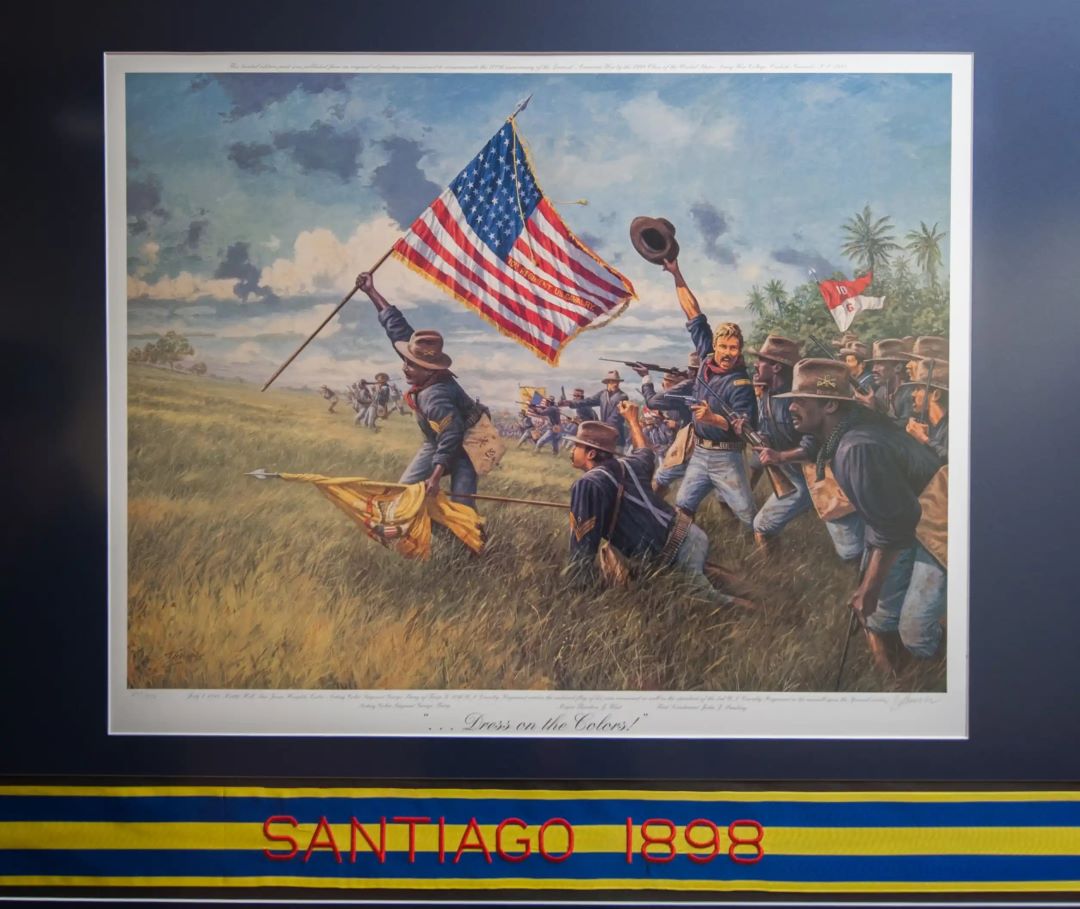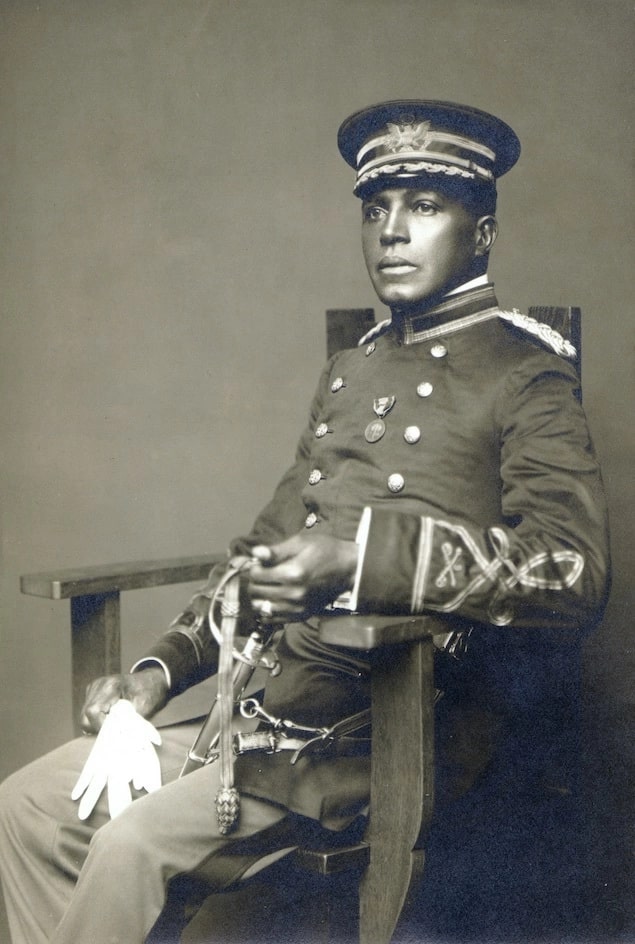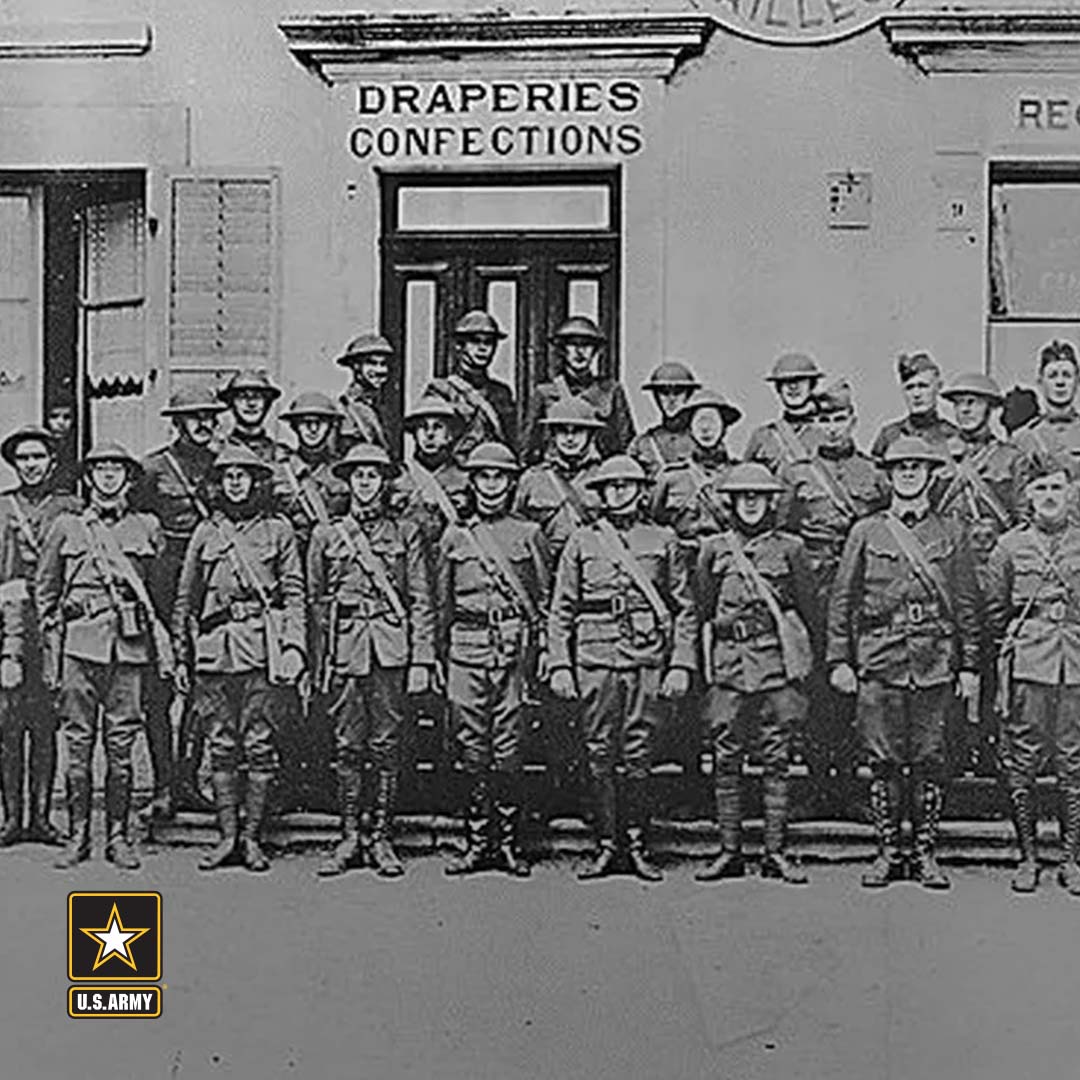Discover and read the best of Twitter Threads about #armyheritage
Most recents (8)
UNIT PROFILE – BLACK SOLDIERS IN THE WAR WITH SPAIN
"They fought their way into the hearts of the American people."
– Lieutenant John J. Pershing
#ArmyHistory #USArmy #TRADOC #BuffaloSoldier #SpanishAmericanWar #BlackHistoryMonth #ArmyHeritage
"They fought their way into the hearts of the American people."
– Lieutenant John J. Pershing
#ArmyHistory #USArmy #TRADOC #BuffaloSoldier #SpanishAmericanWar #BlackHistoryMonth #ArmyHeritage

In the small standing force maintained by the U.S. Army at the start of the War with Spain in 1898, a many Black soldiers served in the Army across four segregated regiments: the 9th and 10th Cav. and the 24th and 25th Inf. (collectively referred to as the Buffalo Soldiers).
The force committed to the land campaign in Cuba during the War with Spain had a total strength of about 15,000 men. Of its 26 regiments, three were composed of U.S. Volunteers while most were Regular Army regiments, including the four Buffalo Soldier regiments.
@USArmy
@USArmy

SOLDIER PROFILE – SERGEANT FIRST CLASS ALWYN C. CASHE, MEDAL OF HONOR RECIPIENT
Born in 1970 SFC Cashe was infantryman who served during 1991’s Operation DESERT STORM and 2003’s Operation IRAQI FREEDOM, earning a posthumous Medal of Honor for his actions in that conflict.
Born in 1970 SFC Cashe was infantryman who served during 1991’s Operation DESERT STORM and 2003’s Operation IRAQI FREEDOM, earning a posthumous Medal of Honor for his actions in that conflict.

During his third combat tour, SFC Cashe was serving with the 1st Battalion, 15th Infantry Regiment of the 3rd ID. On the evening of 17 OCT 2005, he was on a patrol when his Bradley Fighting Vehicle (BFV) struck an IED, crippling the BFV and causing it to burst into flames.
Drenched in fuel, Cashe leapt from the gunner position and ran to BFV’s rear to help soldiers escape. As Cashe braved the flames his fuel-soaked uniform ignited; he persevered despite severe burns, pulling seven soldiers and a translator from the burning BFV.
@TradocCG
@TradocCG

UNIT PROFILE – 99TH FIGHTER SQUADRON (TUSKEGEE AIRMEN)
Among the most iconic units to fight in WWII were the Tuskegee Airmen, a group of all-Black fighter and bomber units which proved that Black airmen were just as capable as their white counterparts.
#Armyhistory #USArmy
Among the most iconic units to fight in WWII were the Tuskegee Airmen, a group of all-Black fighter and bomber units which proved that Black airmen were just as capable as their white counterparts.
#Armyhistory #USArmy

The leading edge of the Tuskegee Airmen was the 99th Fighter Squadron (originally the 99th Pursuit Squadron). The first of the U.S. Army Air Forces units collectively called the Tuskegee Airmen, the men of the 99th began training in Tuskegee, Alabama, in 1941.
#TRADOC #WW2
#TRADOC #WW2
Armed with P-40 Warhawks, the 99th shipped off to the Mediterranean Theater in APR 1943. Under the command of LTC Benjamin O. Davis Jr. (who went on to become the USAF’s first Black general), the 99th provided critical tactical combat support to U.S. Army operations. @TradocCG 

SOLDIER PROFILE – BRIGADIER GENERAL CHARLES YOUNG, FIRST BLACK U.S. ARMY COLONEL
Despite the racism of his time, COL Young forged a stellar career in the late-19th to early-20th century U.S. Army, although promotion to BG was withheld from him for racist reasons.
#Armyhistory
Despite the racism of his time, COL Young forged a stellar career in the late-19th to early-20th century U.S. Army, although promotion to BG was withheld from him for racist reasons.
#Armyhistory

Born into slavery in 1864, Young grew up in Ohio and attended an integrated high school, where he excelled. He attended West Point, becoming the third Black cadet to graduate despite the hostility of many of his peers.
#USArmy #TRADOC #BuffaloSoldier #WWI #IndianWars
#USArmy #TRADOC #BuffaloSoldier #WWI #IndianWars

UNIT PROFILE – 54TH MASSACHUSETTS VOLUNTEER INFANTRY REGIMENT
The Emancipation Proclamation’s promulgation in 1863 opened the Union Army’s ranks to Black soldiers for the first time, allowing Black Americans to fight for the Union’s preservation and the end of slavery.
The Emancipation Proclamation’s promulgation in 1863 opened the Union Army’s ranks to Black soldiers for the first time, allowing Black Americans to fight for the Union’s preservation and the end of slavery.

The 54th Massachusetts Volunteer Infantry Regiment was among the first all-Black units to be stood up. Led by COL Robert Gould Shaw (scion of a prominent abolitionist family) and promoted by prominent figures like Frederick Douglass, the 54th was flooded with recruits. 

Despite Confederate promises to punish captured Black soldiers and their white officers with summary execution for promoting “servile insurrection,” the 54th marched to war in high spirits, leaving Boston on 28 MAY.
#CivilWar #CivilWarHistory #ArmyHeritage #MilitaryHistory
#CivilWar #CivilWarHistory #ArmyHeritage #MilitaryHistory

SOLDIER PROFILES – ONLY THREE RECIPIENTS OF THE BADGE OF MILITARY MERIT
The Purple Heart is one of America’s most iconic military decorations, awarded to service members in recognition of injuries sustained while in service.
#RevolutionaryWar #ArmyHeritage

The Purple Heart is one of America’s most iconic military decorations, awarded to service members in recognition of injuries sustained while in service.
#RevolutionaryWar #ArmyHeritage


The decoration’s origins lay in the Revolutionary War, when General George Washington created the Badge of Military Merit, the first military decoration intended expressly to be awarded to enlisted men.
#Armyhistory #USArmy #TRADOC @USArmy @TRADOC @SecArmy @ArmyChiefStaff
#Armyhistory #USArmy #TRADOC @USArmy @TRADOC @SecArmy @ArmyChiefStaff
In #ThisDayInHistory, the American victory at the #BattleofYorktown would be the last major land battle of the #AmericanRevolutionaryWar.
Check out the thread to learn more about this historic battle!
#ArmyHistory | #ArmyHeritage
Check out the thread to learn more about this historic battle!
#ArmyHistory | #ArmyHeritage

In 1781, the British occupied Yorktown, where General Charles Cornwallis intended to resupply his 9,000-man army.
#ArmyHistory | #ArmyHeritage
#ArmyHistory | #ArmyHeritage

THE BATTLE OF ST-MIHIEL
On September 12, 1918, the American Expeditionary Forces under Commander General John J. Pershing launched its first major offensive in Europe as an independent army.
#ArmyHistory | #ArmyHeritage
On September 12, 1918, the American Expeditionary Forces under Commander General John J. Pershing launched its first major offensive in Europe as an independent army.
#ArmyHistory | #ArmyHeritage

The U.S.-led attack occurred in the Saint-Mihiel salient, a triangular area of land between Verdun and Nancy occupied by the German army since the fall of 1914.
#ArmyHistory | #ArmyHeritage
#ArmyHistory | #ArmyHeritage

The Saint-Mihiel salient was strategically important as it hindered rail communications between Paris and the eastern sections of the front—eliminating the salient was necessary before the final Allied offensive of the war could begin.
#ArmyHistory | #ArmyHeritage
#ArmyHistory | #ArmyHeritage





